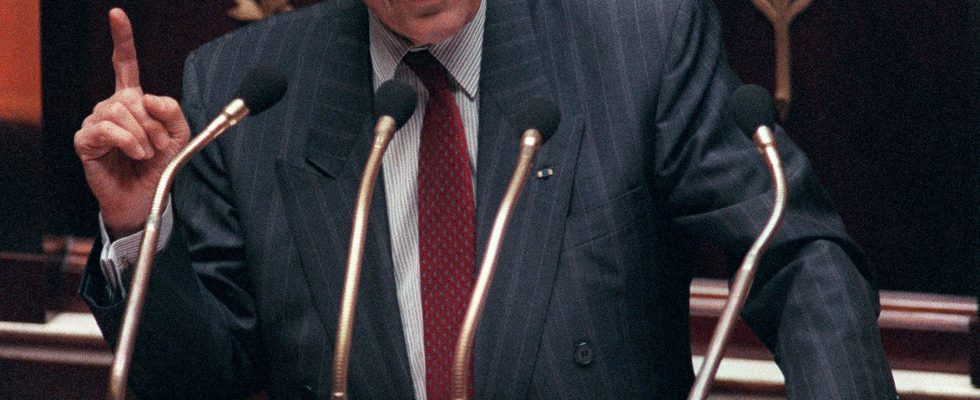For seven decades, our newspaper has covered and analyzed all the highlights of our contemporary history between decolonization, the Cold War, European construction, the advent of the Fifth Republic… It is committed to social struggles such as the abolition of the death penalty or the emancipation of women and welcomed great feathers like François Mauriac, Albert Camus or Jean-Paul Sartre. Turning the pages of our archiveswe invite you to relive the news of the past seventy years.
In 1991, Raphaël Hadas-Lebel decrypts for L’Express the already rich history of the 49.3. This device of the constitutional arsenal of the Fifth Republic proves to be very useful in the event of a not very docile majority as under the government of Raymond Barre or very narrow as was the case under Michel Rocard. The State Councilor warns: “What should have been an exceptional use device is gradually tending to become common practice”. For the 100th time since its appearance in the Constitution, the 49.3 has just been used Elisabeth Borne to pass pension reform law.
The Express of May 9, 1991
The 49.3 record holder
By engaging the government’s responsibility for the hospital reform project, Michel Rocard “draw 49.3” for the twenty-seventh time since joining Matignon. At this rate, the Prime Minister alone will soon have used this procedure almost as many times as all his predecessors combined since 1958.
Why, indeed, deprive oneself of a weapon precisely designed to deal with the absence of an absolute majority supporting the government?
Paternity
Under the Fourth Republic, we had seen what could lead to these situations where governments, without being censured in the constitutional forms, were denied the laws necessary for the conduct of their policy. It was to remedy these blockages that Article 49.3 of the Constitution was drawn up in 1958, the authorship of which goes not to General de Gaulle or Michel Debré, but to Guy Mollet and Pierre Pflimlin, who, having had to suffer from parliamentary excesses, pleaded for the adoption of strict mechanisms, capable of placing the deputies before their responsibilities.
When the government engages its responsibility on a text, the bill is considered adopted if a motion of censure is not tabled within twenty-four hours. If a motion of censure is tabled, the vote is no longer on the bill, but on censure. If the latter is rejected, the text is thereby adopted. This procedure is certainly exorbitant, since it leads to the adoption of a law, not only without discussion or amendment, but without a vote.
“Dangerous for the diet, I agree…”
Paul Reynaud had, as early as 1958, perceived its formidable scope: “Unique case in the world: Parliament will not pass the law. It is the government which, on its own authority, will do so.” To which Michel Debré had replied: “Dangerous for the regime I agree, if they were used at any time, these provisions seem to me on the contrary essential for exceptional cases.” So far, practice has responded well to this analysis. About ten times, from 1959 to 1967 – notably for the deterrent force.
Eight times (including six in 1979) on the initiative of Raymond Barre, which earned him a letter of protest from Gaston Defferre, while François Mitterrand invited moderate use of this procedure. Seven times under the Mauroy government, four under that of Laurent Fabius. As for Jacques Chirac, he had to use him eight times to force the hand of a restive majority.
Since 1988, Michel Rocard, assisted by talented and inventive collaborators, has only resorted to it when he has not been able to bring together “majorities of ideas” around his texts. This was the case for fourteen of them, including the Xth Plan and the laws on the CSA and the CSG. But what should have been an exceptional use device is gradually becoming common practice. This is not satisfactory for the balance of our institutions. It is excellent that our constitutional arsenal contains a weapon capable of forcing the majority and the opposition to position themselves clearly. But one cannot make a means of government out of a technique which, like so many other good things in life, is to be consumed in moderation.
